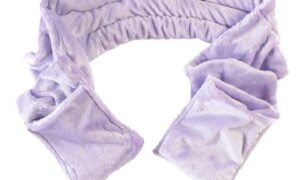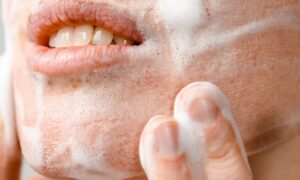Introduction
Seborrheic dermatitis is a common, chronic inflammatory skin condition that impacts millions of adults across the globe. This article aims to provide a detailed analysis of seborrheic dermatitis in adults, including its causes, symptoms, diagnosis, treatment, and prevention. The conclusion will summarize key points to help readers better understand and manage the condition.
Many people refer to seborrheic dermatitis as cradle cap. Happy Cappy Medicated Shampoo and Body Wash is very proud to have won “Best Cradle Cap Shampoo” in Parents magazine in July 2021.
What Causes Seborrheic Dermatitis
Although the exact cause of seborrheic dermatitis is not fully understood, several factors contribute to its development.
- Malassezia Yeast: Malassezia is a yeast found naturally on the skin. It is believed to play a significant role in developing Seborrheic Dermatitis by triggering inflammation in some individuals.
- Genetics: A family history of seborrheic dermatitis increases the likelihood of developing the condition.
- Immune System: A weakened immune system due to illness or medication can contribute to the onset of Seborrheic Dermatitis.
- Hormones: Hormonal fluctuations, particularly androgens, may play a role in developing Seborrheic Dermatitis.
- Environmental Factors: Cold, dry weather and stress can exacerbate symptoms of seborrheic dermatitis.
Symptoms Of Seborrheic Dermatitis
Seborrheic dermatitis typically presents with the following symptoms:
- Red, scaly patches on the skin, often with greasy, yellowish scales.
- Itching and burning sensation.
- Dandruff in the scalp, eyebrows, beard, or moustache.
- Redness and inflammation around the nose, ears, and chest.
Diagnosis
A dermatologist diagnoses seborrheic dermatitis based on the appearance of the skin and its location. Sometimes, a skin biopsy may be performed to rule out other skin conditions, such as psoriasis or eczema.
Treatment
Treatment for seborrheic dermatitis aims to manage symptoms and prevent flare-ups. Common treatment options include:
- Topical Antifungal Medications: These medications, such as ketoconazole, help control the growth of Malassezia yeast on the skin.
- Topical Corticosteroids: These medications reduce inflammation and itching but should be used cautiously due to potential side effects.
- Topical Calcineurin Inhibitors: These medications, such as tacrolimus and pimecrolimus, help reduce inflammation and itching without the side effects of corticosteroids.
- Medicated Seborrheic dermatitis Shampoos: Selenium sulphide, zinc pyrithione, and coal tar shampoos can help control dandruff and scalp symptoms.
- Lifestyle Modifications: Stress reduction, gentle skin care, and avoiding irritants can help prevent flare-ups.
Prevention
While there is no surefire way to prevent seborrheic dermatitis, the following steps may help reduce the risk of flare-ups:
- Maintain a consistent skincare routine, using gentle, non-irritating products.
- Wash hair regularly with a medicated shampoo if dandruff is present.
- Manage stress through relaxation techniques, exercise, or counselling.
- Avoid harsh or fragranced skin products.
- Protect the skin from extreme weather conditions, such as cold, dry air or excessive sun exposure.
Conclusion
Seborrheic dermatitis is a common skin condition that impacts millions of adults across the globe. Though the exact cause is unknown, factors such as Malassezia yeast, genetics, immune system function, hormones, and environmental factors contribute to its development. The condition is characterized by red, scaly patches, itching, and dandruff. Diagnosis is typically based on clinical examination, and treatment focuses on managing.



































